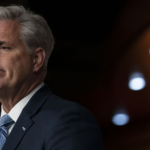
Marketing Pulse Survey 2015 By Korn Ferry Institute
Korn Ferry’s Global Marketing Center of Expertise surveyed over 480 Chief Marketing Officers (CMOs) and marketing leaders from the Korn Ferry database of top U.S. companies.
Exploring a wide variety of issues, including customer-centricity, digital transformation, the most important CMO competency and top challenges marketing leaders are facing when carrying out change agendas, the 2015 Marketing Pulse Survey sheds light on the key issues facing CMOs as they tackle today’s marketing and business challenges.
Through an aggregation of marketing leaders’ opinions on critical business issues impacting their companies and their jobs, this survey ultimately reveals a pulse of what is driving marketing decisions in the C-suite.
In today’s market, the need to create a more customer-centric and seamless brand experience is increasing the complexity of the marketing role. With the business environment, customers’ expectations and innovation cycle all growing in complexity, the need for marketing leaders to adapt to new and often unfamiliar environments, as well as serve as a catalyst for organization-wide change continues to grow. The Marketing Pulse Survey dives deep into the challenges characterizing the marketing landscape by revealing what is keeping CMOs up at night and the challenges that are impacting their roles and business strategies.
Nine in 10 marketing leaders agree that their organization is trying to become more customer-centric when it comes to their strategic initiatives and overall business goals. As a result, it comes as no surprise that creating sustainable and engaging customer relationships and improving the customer experience is what keeps most marketers up at night. Other pressing issues facing CMOs include the ability to demonstrate Marketing’s ROI and staying ahead and taking advantage of digital tools to create meaningful business insights.
What keep you up at night?
To what extent to you agree with the following statement: “My organization is trying to become more customer-centric when it comes to our strategic initiatives and overall business goals.”
Marketing leaders struggle to align the organization around the change agendas they were hired to drive. Marketers also believe this inability to drive organizational change is the biggest contributing factor to low CMO tenure. Other factors contributing to low CMO tenure include an inability to directly connect marketing efforts to tangible business outcomes, and the inability by organizational leaders to provide a clear mandate for the CMO role. Taking a closer look at the obstacles preventing CMOs from carrying out change within their organizations, nearly half of marketing executives indicate that when addressing “digital disruption,” the board and/or CEO are aware of the potential impact, but are not actively addressing the changes.
What do you feel is the biggest contributing factor to low CMO tenure when compared to other C-suite functions?
When addressing “digital disruption” with my company’s board and/or CEO, they are:
A key component of CMOs’ digital transformation agendas is personalizing the customer experience, which an overwhelming majority of marketing leaders agree is a key priority for their organization. To do so, CMOs are engaging with customers via social and digital channels, developing “one view” of the customer approach and seamless messaging across different communication channels, and leveraging data analytics to differentiate product offerings. CMOs are also drawing upon a wide variety of marketing channels—primarily e-mail alerts, Facebook, online advertising, promotional events and the sales team—to further engage with customers. When leveraging social platforms, the top three strategies marketing leaders are employing include engaging via direct customer communication; leveraging social analytics to inform business strategy; and creating and implementing highly targeted ads and promotions. The responsibility of managing the post-purchase experience, according to marketing leaders, is held by the customer service department.
To what extent do you agree with the following statement: “Personalizing the customer experience is a key priority for my organization.”
Which department within the organization is currently most responsible for managing the customers’ post-purchase experience?
Please rank the steps which you are taking to personalize the customer experience in order of priority (1=highest; 4=lowest)
Please select all of the marketing channels that your organization uses to engage with customers:
When leveraging social platforms, the top three strategies marketing leaders are employing include engaging via direct customer communication; using social analytics to inform business strategy; and creating and implementing highly targeted ads and promotions. Despite these personalization and customer engagement initiatives, over half of marketing executives indicate the biggest hurdle they face when developing an integrated customer experience is aligning all facets of the organization. Other hurdles include creating consistent customer engagement across all sales and media channels and identifying and using the right insights to help all departments align with the customer vision.
Please rank the following strategies in order of priority when leveraging social platforms.
What is the biggest hurdle when developing an integrated customer experience?
Data is playing a critical role in marketing leaders’ efforts to foster meaningful customer relationships. In fact, the most sought-after specialized skill within the marketing function according to respondents is analytical thinking, followed closely by a customer-centric approach.
What is the most sought-after specialized skill within the marketing function?

Seven in 10 CMOs agree customer data has inspired their marketing strategy to become more customer-focused The survey found that leveraging data to learn more about and connect with customers has been the most effective application for analytics for CMOs, followed by measuring business outcomes of creative programs. Therefore, it’s not surprising that almost half of marketing leaders expect their company to increase its use of real-time predictive analytics by 25% this year to learn more about and connect with customers; nearly one-fourth predict a 26-50% increase.
To what extent do you agree with the following statement: “Customer data is influencing my company’s overall marketing strategy to become more buyer-led.”
By what percentage do you expect your company to increase its use of real-time and predictive analytics this year to learn more about and connect with customers?
For your team, what has been the most effective application for analytics? 




























